- Z Seam | How to Hide & Avoid | Cura & PrusaSlicer - April 20, 2024
- Qidi Tech Q1 Pro – Best Orca Slicer Settings & Profile - April 9, 2024
- Creality Ender-3 V3 Review – Will CoreXZ be the New Trend? - March 27, 2024
Disclosure: Links marked with * are Affiliate Links. I earn from qualifying purchases if you decide to make a purchase through these links – at no additional cost for you!
I have tested the Qidi Tech Q1 Pro* intensively and share my experiences in this practical review.
Judging by its specifications, it combines three of the most important 3D printer features: it is compatible with most filaments, has a high printing speed and produces a flawless print quality.
Is it the all-in-one 3D printer we’ve all been waiting for? Let’s get to the bottom of these promises together and discover whether the Qidi Tech Q1 Pro actually delivers what it promises!
Review Summary
Overall, the Qidi Tech Q1 Pro is a powerful 3D printer that impresses with its high printing speed, excellent print quality and broad filament compatibility.
Its automatic bed leveling, the nozzle cleaning system and the PEI print bed greatly simplify the printing process and post-processing, while the robust design and advanced features such as input shaping, the dual Z-axis and CoreXY construction ensure precise prints.
These are my highlights of the Qidi Tech Q1 Pro:

Speed
Up to 500 mm/s, normal is 300 mm/s. 3DBenchy in 17 minutes!

Quality
High-precision thanks to input shaping and stable construction.

Versatility
Compatible with many filaments, including demanding ones like ABS, ASA and PC.

User-Friendliness
Simple day-to-day operation with self-calibration and automatic nozzle cleaning system.
OVERALL RATING:
4,5/5
PROS
✓ Heatable print volume
✓ High filament compatibility
✓ Simple installation & operation
✓ High printing speed
✓ Excellent print quality
✓ Built-in camera
CONS
× No air filter in the enclosure (can be self-printed and installed)
The Qidi Tech Q1 Pro is a highly versatile and user-friendly 3D printer, excelling in speed, quality, and filament compatibility. Its robust design and advanced features like automatic bed leveling and nozzle cleaning system make it a top choice for both beginners and experienced users.
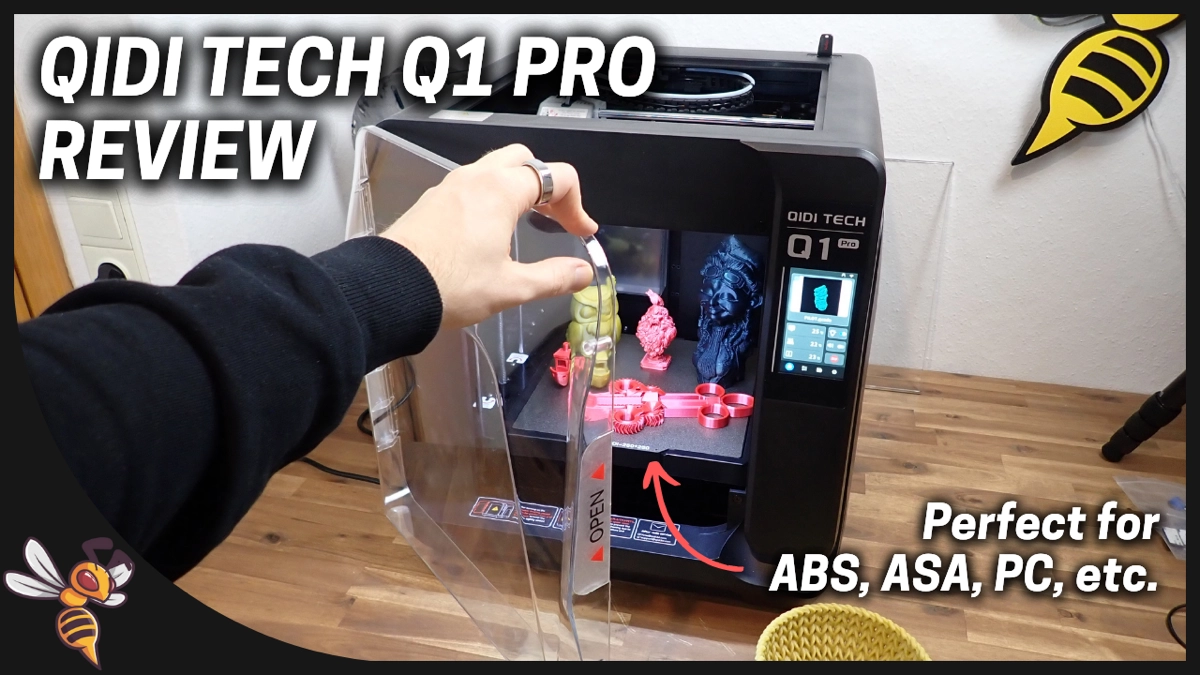
Table of Contents:
Unboxing & First Impression
When unpacking the Qidi Tech Q1 Pro, you immediately notice that the 3D printer is delivered completely pre-assembled – a real plus point for getting started quickly.
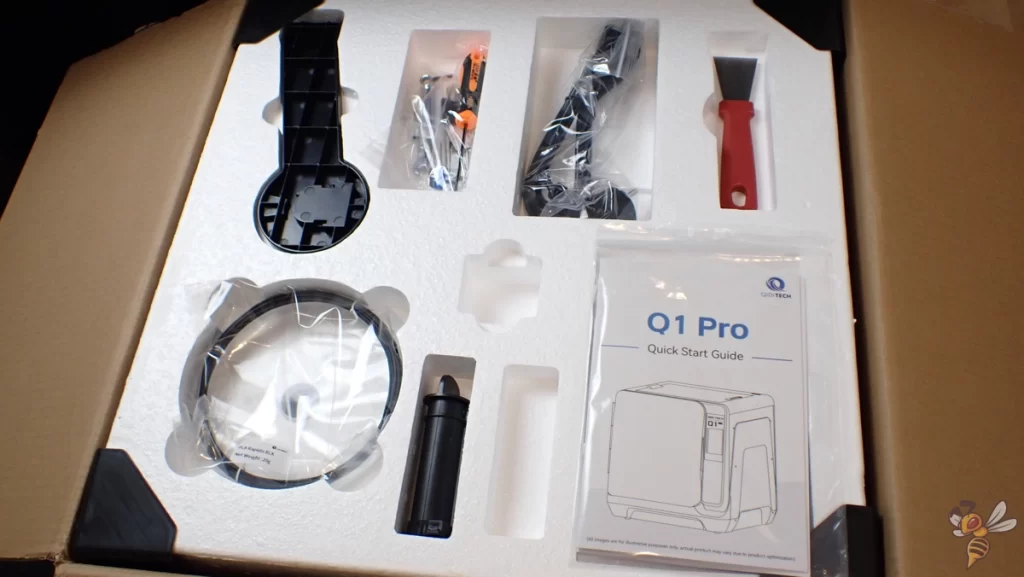
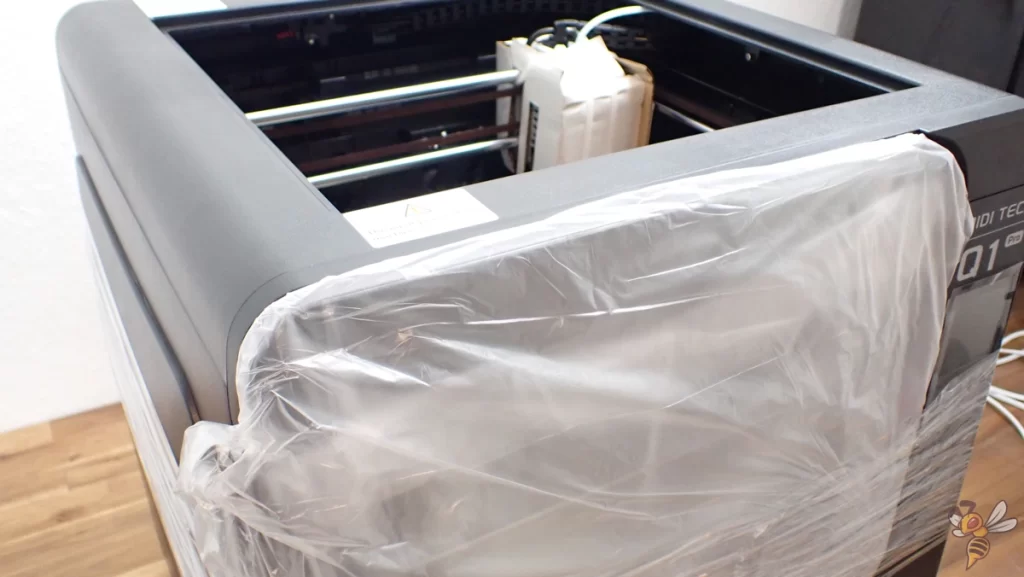
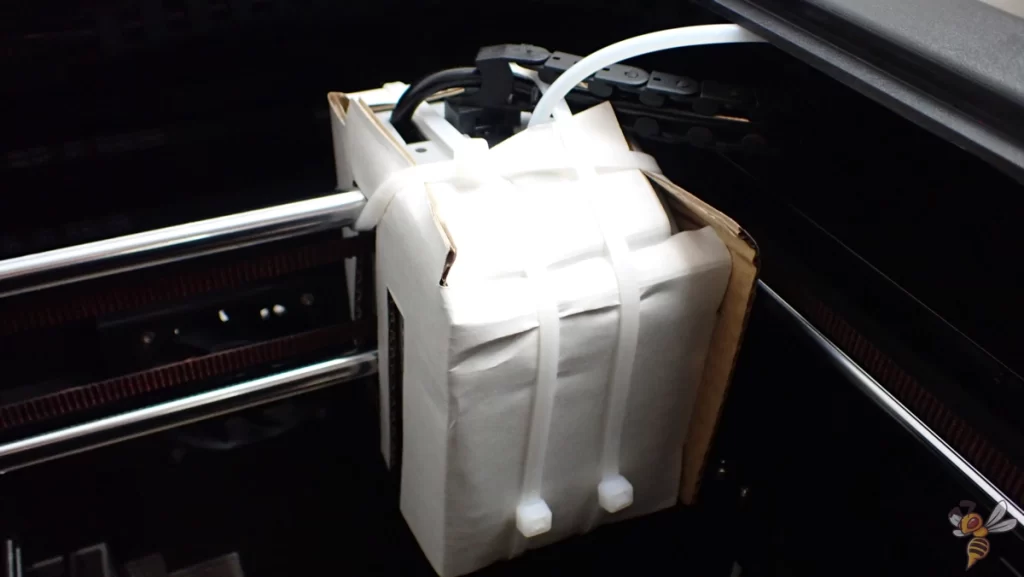
The automatic filament cleaner is particularly eye-catching, a feature that I have rarely seen in this form and makes maintenance of the 3D printer much easier.
The filament holder on the side is also a very welcome detail, as it makes it easier to change the filament, especially when the printer is positioned with its back to the wall.
In addition to the printer itself, the scope of delivery also includes the filament holder, a set of tools, operating instructions, spare parts and a USB stick. This stick not only contains test models that can be tried out immediately, but also the software and a digital version of the operating instructions.
- Printing technology: FDM (Fused Deposition Modeling)
- Print volume: 240 × 240 × 240 mm
- Maximum nozzle temperature: 350 °C
- Maximum bed temperature: 120 °C
- Printing speed: Up to 500 mm/s, standard 300 mm/s
- Extruder type: Direct drive with hardened steel gears
- Nozzle diameter: Standard 0.4 mm
- Filament diameter: 1.75 mm
- Construction: CoreXY
- Z-axis configuration: Dual Z-axis
- Bed leveling: Automatic print bed leveling
- Heating bed: PEI magnetic printing bed, flexible
- Operation: 4.3-inch touchscreen, color
- Connectivity: USB, WLAN
- Supported filaments: PLA, ABS, PETG, TPU, PA, PC, ASA, as well as carbon and glass fiber reinforced filaments
- Software compatibility: Qidi Slicer, Cura, PrusaSlicer, Orca Slicer
- Additional functions: Filament detection, power-off resume, built-in camera with timelapse function, automatic nozzle cleaning
- Enclosure: Steel chassis with plastic enclosure
Setup
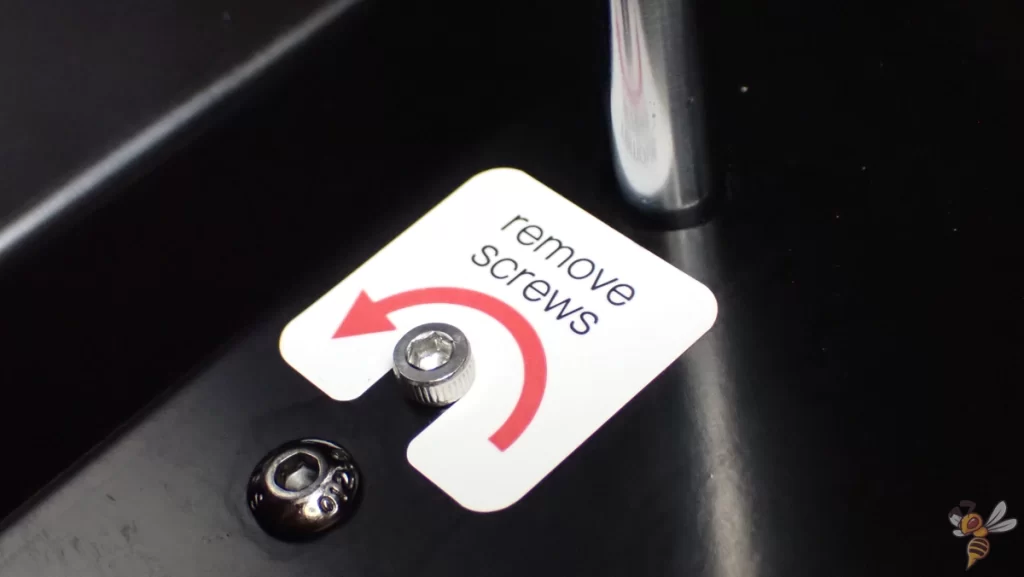
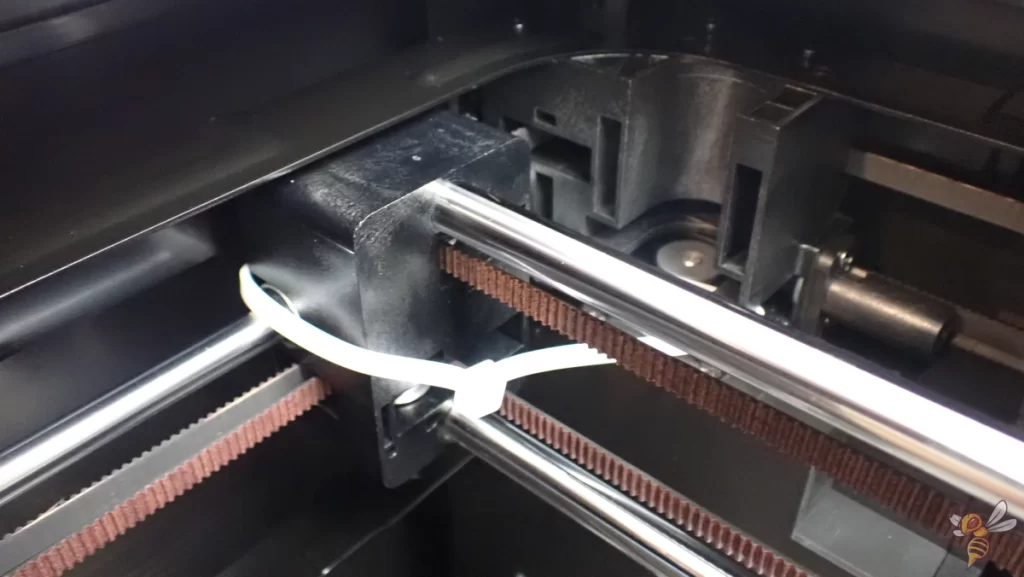
The Qidi Tech Q1 Pro is easy to use right out of the box – it comes completely pre-assembled. The “assembly” is limited to simple steps: Unpacking, setting it up in the desired location, attaching the filament holder and removing the transportation locks.
You then carry out a self-calibration via the menu. This self-calibration only takes a few minutes. The printer is then ready to load the filament and start the first print project!
This simple setup makes the Q1 Pro particularly attractive for beginners, as there are no technically complex assembly steps. The clear structure of the steps supports a smooth start in the world of 3D printing.
The printer’s self-calibration ensures that it works precisely and reliably, which significantly increases the chances of success with the first print. In short: you can concentrate almost immediately on the essentials – creating 3D prints.
Self-Calibration
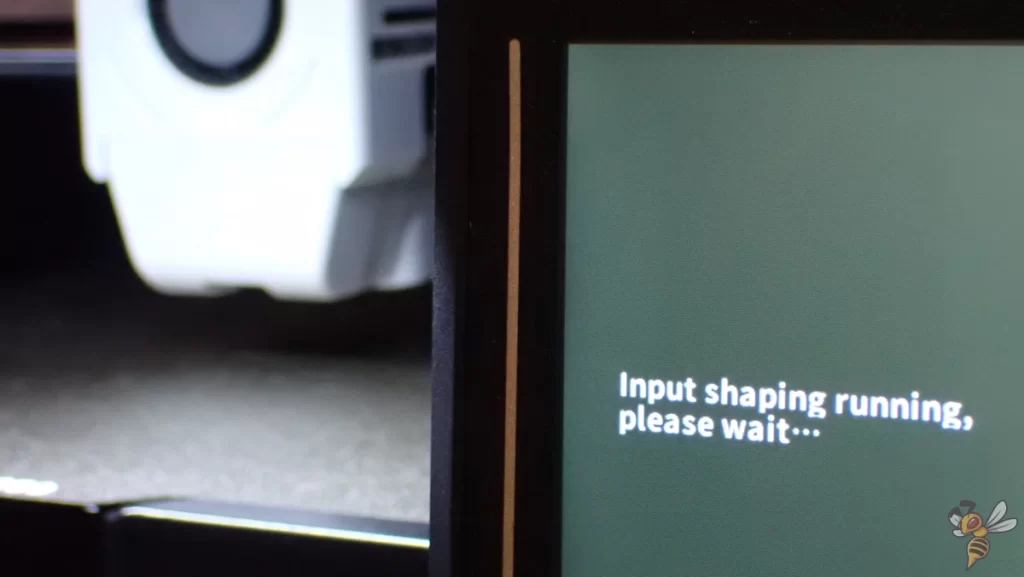
Self-calibration of the Qidi Tech Q1 Pro is a crucial step in ensuring that the printer performs optimally. This function automates two important processes: print bed leveling and resonance compensation.
Print bed leveling: This part of self-calibration adjusts the print bed so that it is in perfect alignment with the nozzle. A correctly leveled print bed is crucial to ensure that the first layers of your print are applied evenly and without errors. For beginners, this means you don’t have to struggle with manual leveling with adjusting screws!
Resonance compensation (input shaping): This is all about minimizing vibrations and motion blur that can occur during the printing process. Through intelligent adjustments, resonance compensation ensures that the printer works precisely even at high speeds. The result is clean, sharp prints without blurring or distortion. A must for high print speeds.
Print Volume & Stability
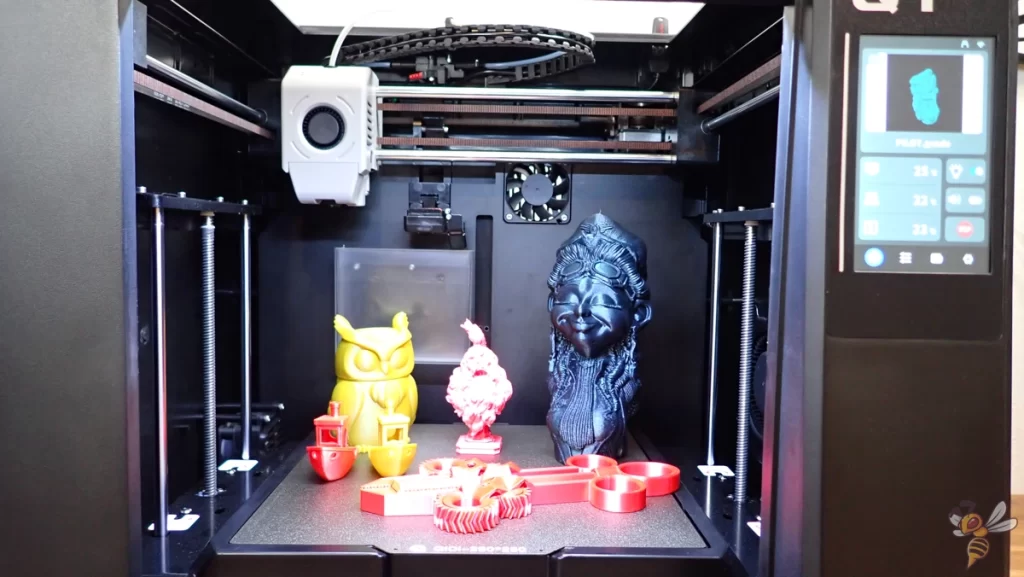
The print volume of the Qidi Tech Q1 Pro is large enough to print medium-sized objects in a single pass without interruption. This flexibility opens up a wide range of project possibilities, from small detail work to larger constructions.
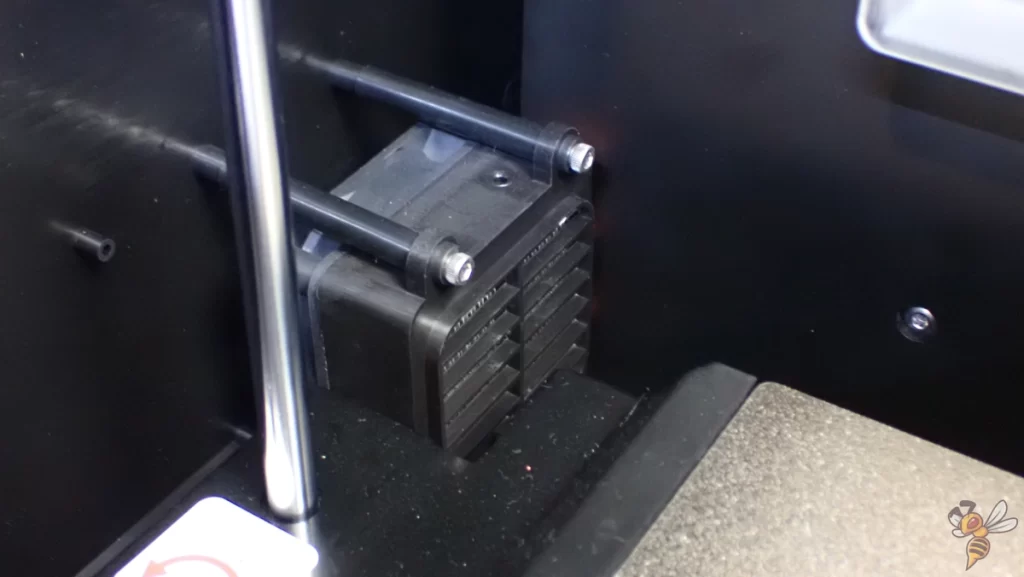
A particularly noteworthy feature is the closed and heatable print volume. This function makes it easy to use exotic filaments that require special conditions, such as higher ambient temperatures.
This means that materials such as ABS or special technical filaments can be processed under optimum conditions, which significantly improves the quality of the print results.
The only disadvantage here is that no air filters with activated carbon and HEPA filters are installed. This would capture a large proportion of the unhealthy vapors that arise when printing some filaments (such as ABS vapors, for example). But Qidi Tech already told me that there is a self-printable filter that you can install in the enclosure.
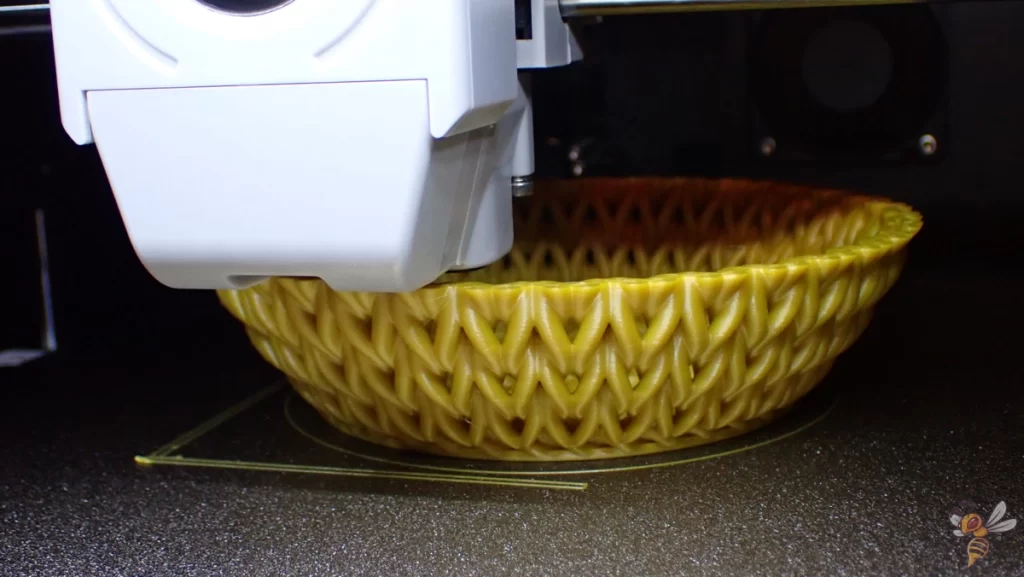
The stability of the Q1 Pro is guaranteed by its robust chassis, which ensures minimal vibrations even at high printing speeds of up to 500 mm/s. This is crucial for maintaining print quality, as vibrations can lead to irregularities in the print. My own tests confirm this: At 300 mm/s, the print results remain (almost) flawless.
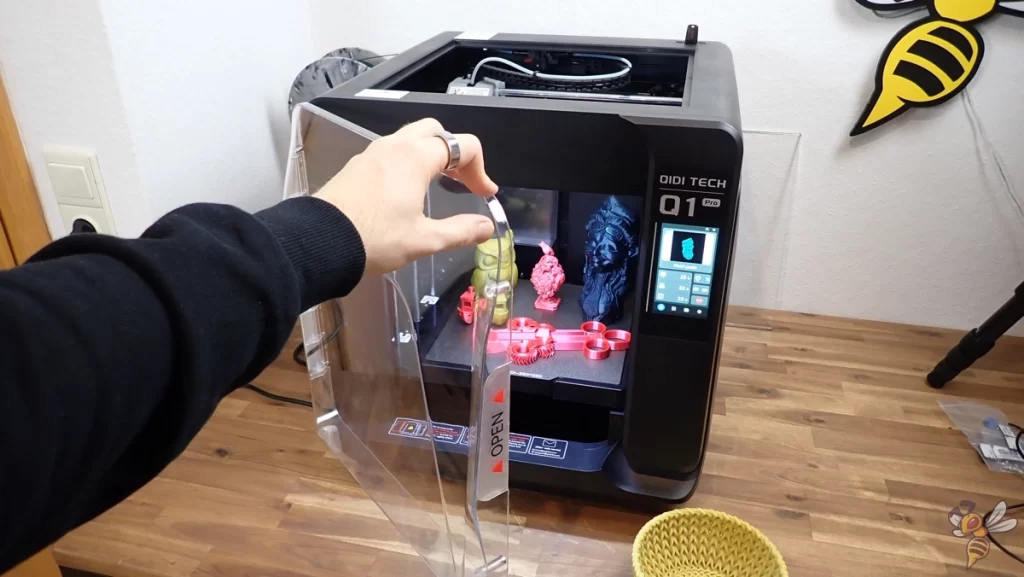
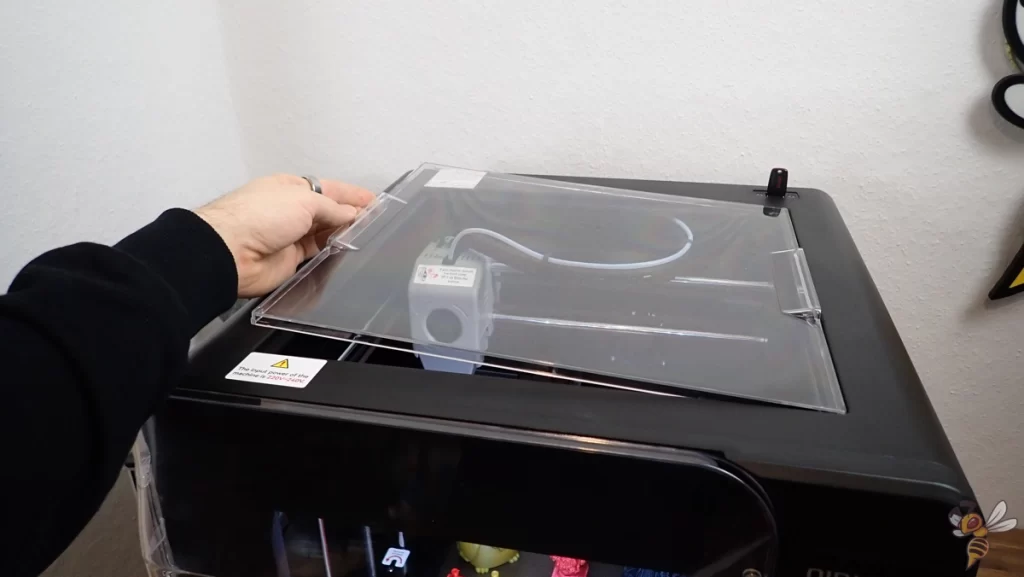
The print volume is accessible through a magnetically lockable door at the front and a removable hood at the top. This configuration offers adaptability for different filament types. For filaments that tend to warp, it is recommended to keep the print volume closed to ensure a constant temperature. For less sensitive materials such as PLA, the chamber should be opened to allow for better cooling.
Extruder
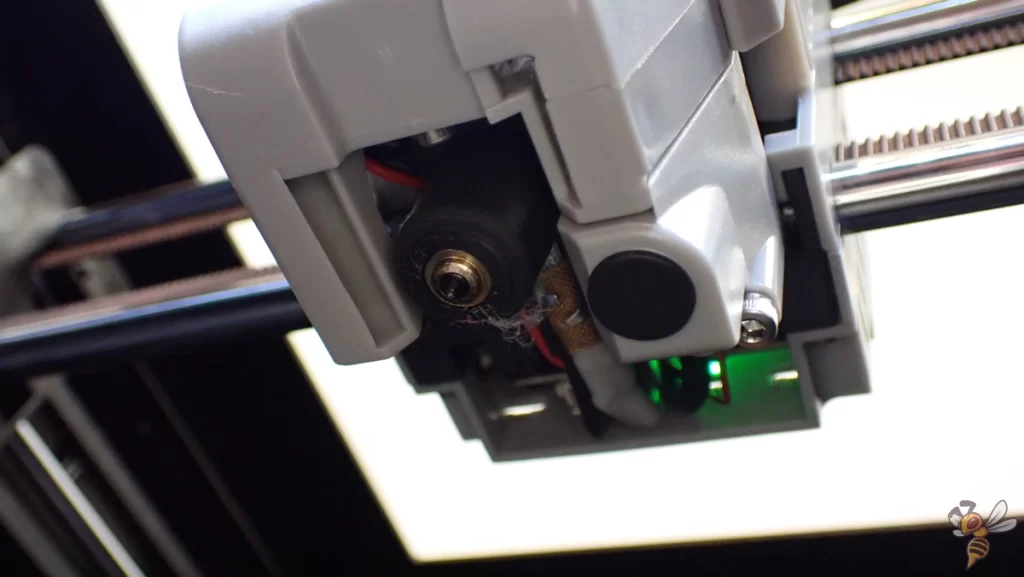
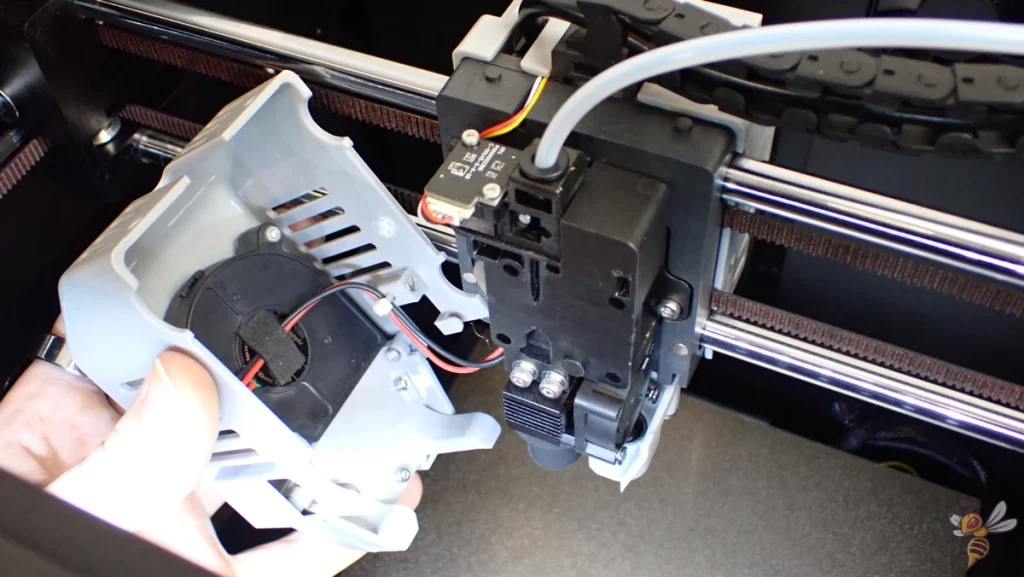
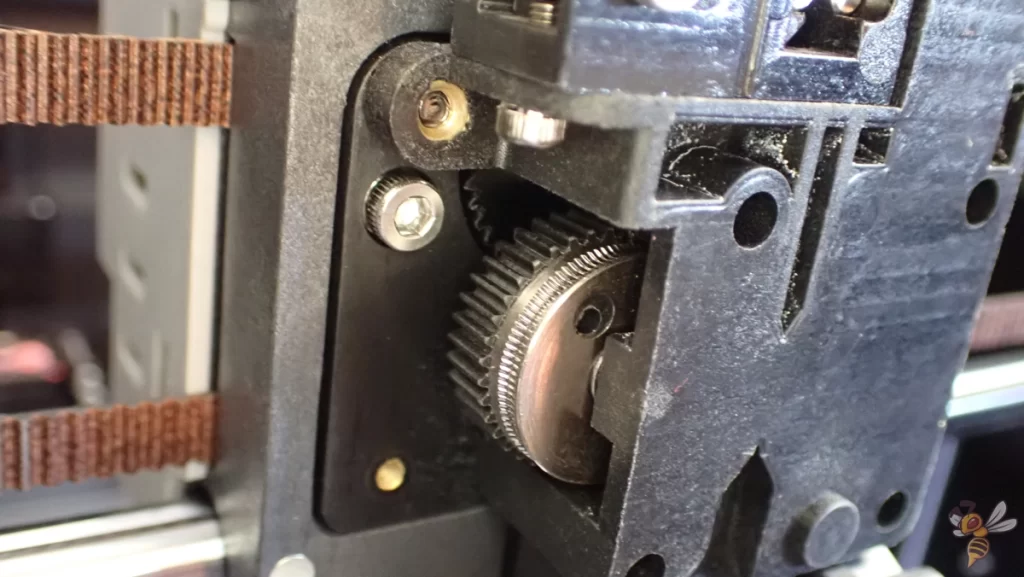
The extruder of the Qidi Tech Q1 Pro can process a wide range of filaments. The secret lies in its direct drive system with hardened steel gears, a gear ratio of 8.9 to 1 and a bi-metal nozzle. This configuration offers several advantages that make it ideal for a wide variety of materials:
- Precise filament feed: the direct drive mechanism enables very precise control of the filament feed. This is particularly important for filaments that require constant and precise extrusion, such as flexible filaments.
- Improved power transmission: The combination of hardened steel gears and an optimized transmission ratio ensures powerful and consistent extrusion. This means that even harder materials such as carbon or glass fiber filaments can be processed without any problems.
- High temperature resistance: The extruder is designed to withstand temperatures of up to 350 °C. This high temperature tolerance makes it possible to use a wide range of filaments, from PLA to more exotic options such as ASA, which require higher melting temperatures.
- Low maintenance and durable: The use of hardened steel not only increases the performance of the extruder, but also its longevity and reliability. This minimizes the need for frequent maintenance or replacement.
Filament Compatibility
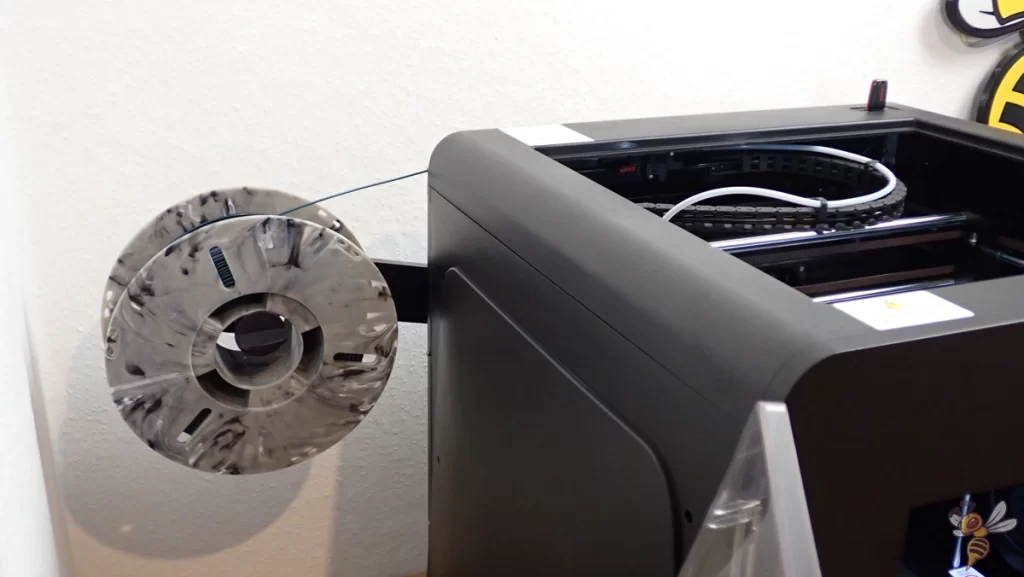
The Qidi Tech Q1 Pro is compatible with a really wide range of filaments. It is compatible with all standard filaments such as PLA, ABS, PETG and TPU, but can also process demanding filaments such as ASA, PC or carbon filaments.
Here are the technical features and design decisions that contribute to this:
- Heatable print bed up to 120 °C: Enables printing with materials that require higher adhesion, such as ABS, by reducing warping.
- Wide temperature range: The hotend can reach very high temperatures of up to 350 °C, enabling printing with a variety of filaments such as PLA, ABS, PETG, TPU, and specialized high-temperature materials.
- Direct Drive Extruder: Improves filament feeding reliability and enables printing with flexible filaments such as TPU.
- Hardened Steel Nozzle: Provides greater wear resistance, which is especially beneficial when printing with abrasive materials such as carbon or fiberglass reinforced filaments.
- Closed housing: Creates a stable environment with a constant temperature, which is particularly advantageous for temperature-sensitive materials.
- Automatic calibration: Ensures that the print bed is always set correctly, ensuring good adhesion across a wide range of materials.
PEI Print Bed
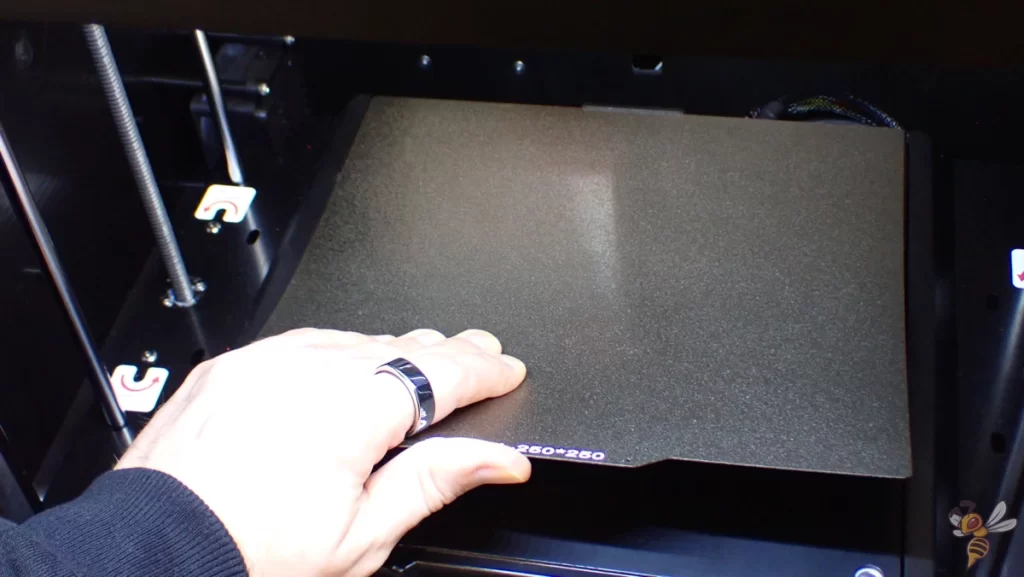
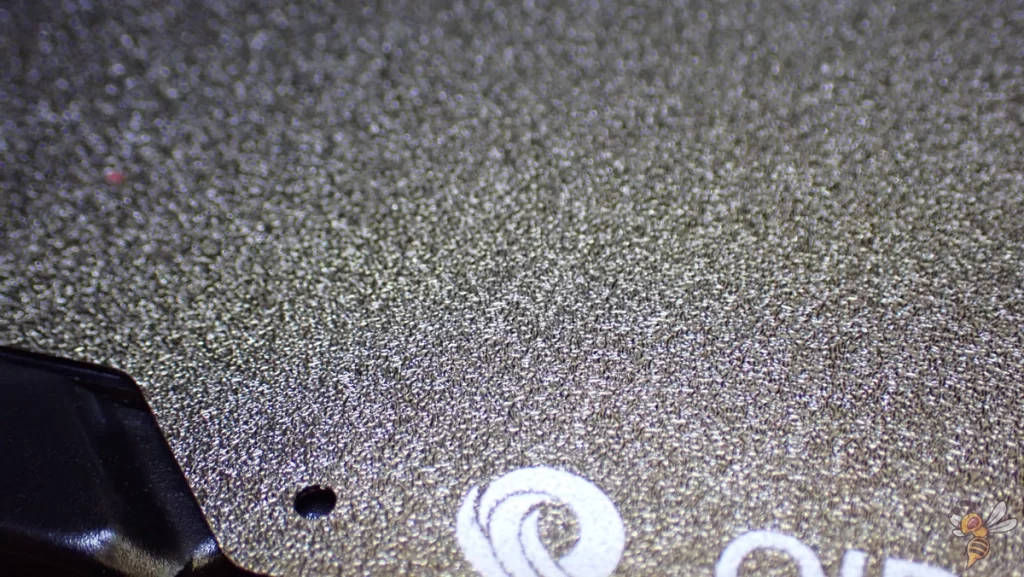
The PEI print bed has excellent adhesion properties, ensuring that the first layers of the print adhere firmly to the print bed without the risk of the print coming loose or warping during the printing process.
It is heat-resistant and flexible at the same time, making the removal of finished prints a breeze. Once cooled, prints can often be removed simply by gently bending the bed, without the need for spatulas or other tools that could damage the print bed or print.
Automatic Nozzle Cleaning
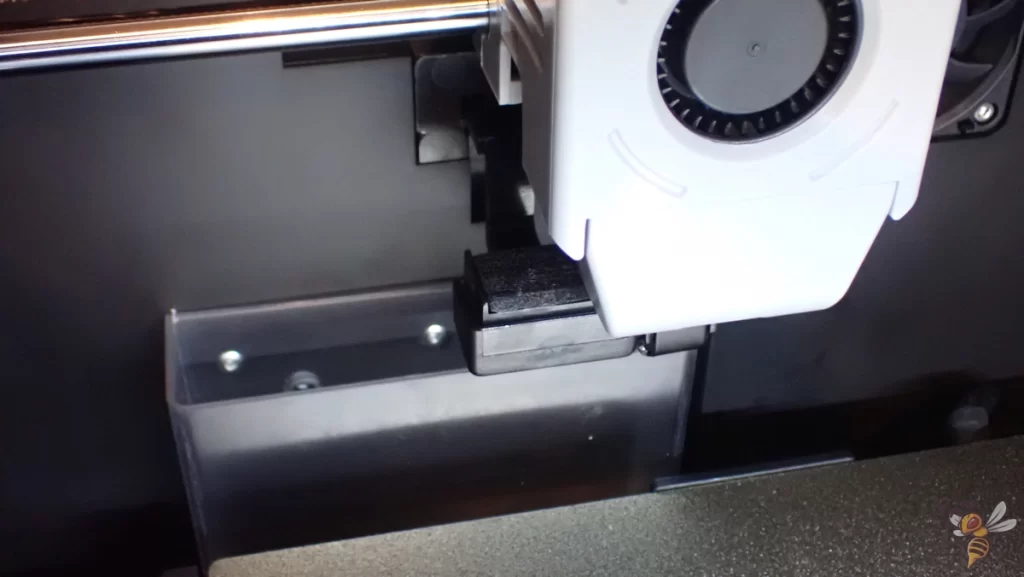
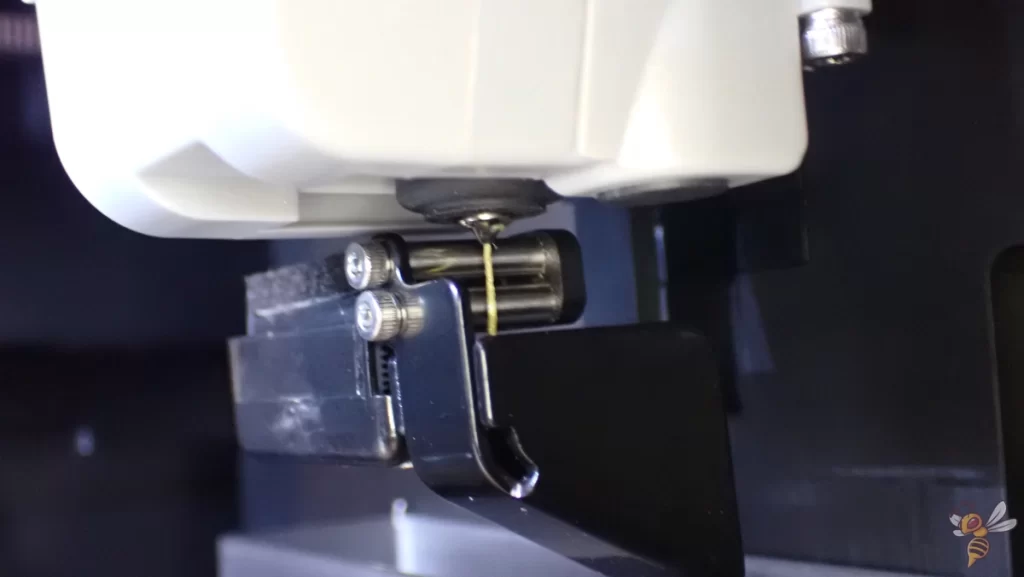
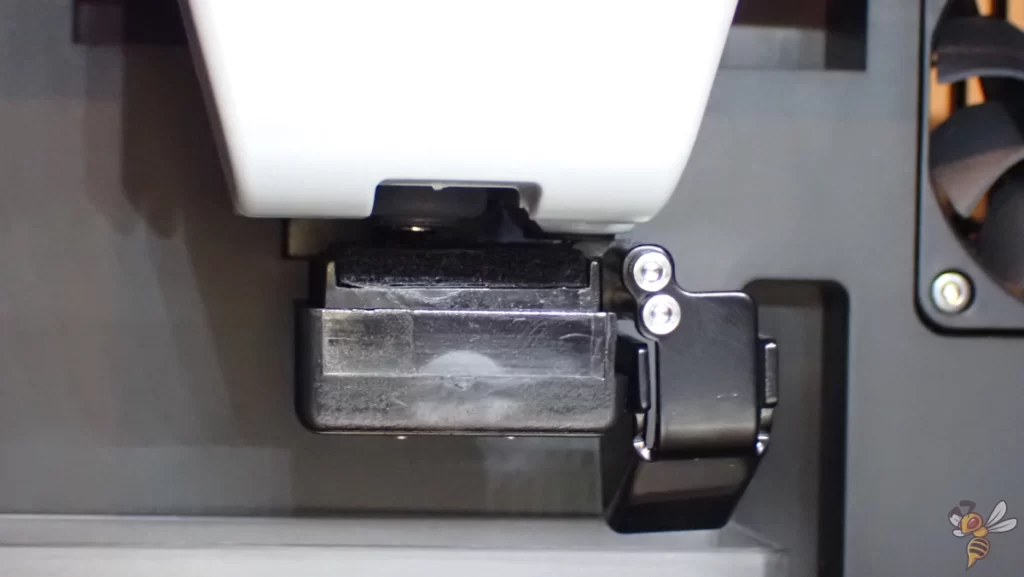
A highlight of the Qidi Tech Q1 Pro is the automatic nozzle cleaning. When the hotend heats up or cools down, filament may escape from the nozzle.
To prevent this excess filament from interfering with the print bed leveling or even affecting the first layer of the print, the Q1 Pro has a clever solution: the nozzle is automatically cleaned on a felt pad at the rear of the housing. Excess filament is collected in a container.
This feature impresses with its simplicity and effectiveness. It saves an important step in regular maintenance. Normally, it would be necessary to clean the nozzle manually with a paper towel before each print to remove excess filament.
Print Speed
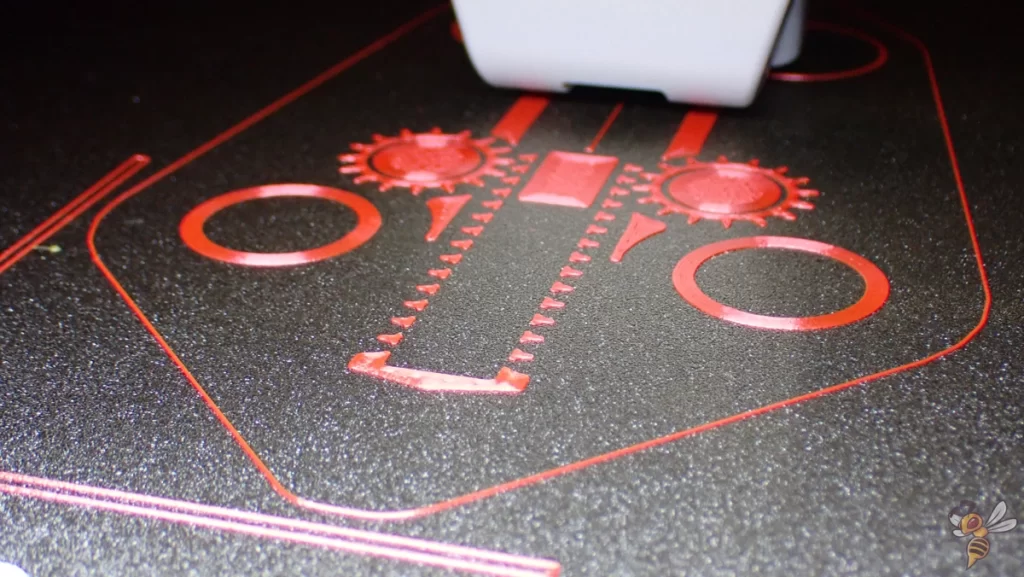
The Qidi Tech Q1 Pro impresses with print speeds of up to 500 mm/s, with the standard speed being a solid 300 mm/s. In my tests, I consistently printed at 300 mm/s and achieved good results.
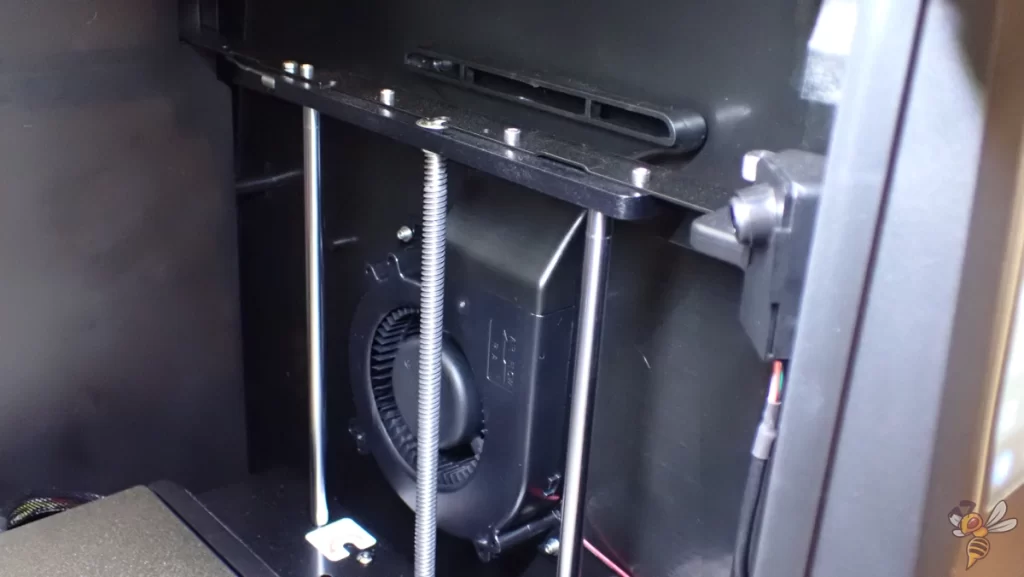
The 3D printer owes this high speed to several features: efficient resonance compensation, a stable chassis, a fast filament feed and powerful cooling, supported by a side-mounted layer cooler.
Compared to models that were on the market just a few months or a year or two ago, these speeds are revolutionary. However, most current 3D printers now achieve similar speeds, but the performance of the Q1 Pro remains at the top end with standard speeds of 300 mm/s.
Print Quality
The Qidi Tech Q1 Pro delivers outstanding print quality. Thanks to effective resonance compensation, typical errors such as ringing or ghosting are eliminated even at high print speeds.
To assess the quality more precisely, I printed various challenging objects. All tests were carried out with a layer height of 0.1 mm and a speed of 300 mm/s.
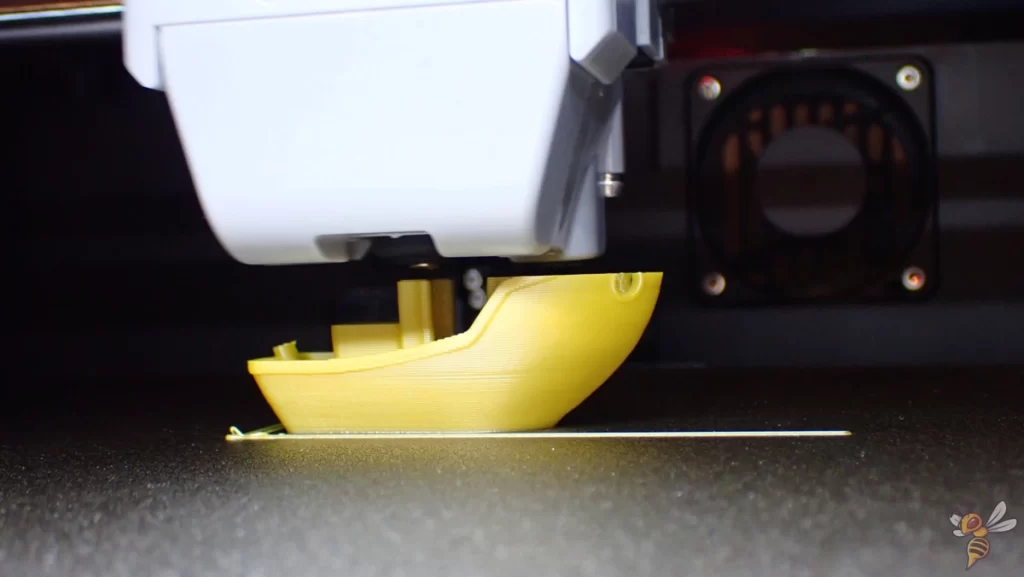
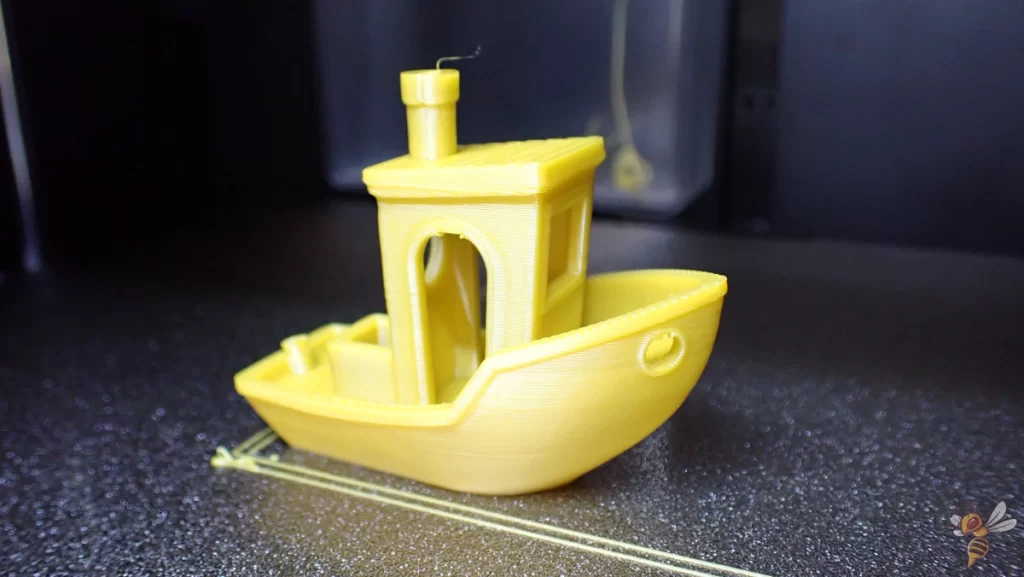
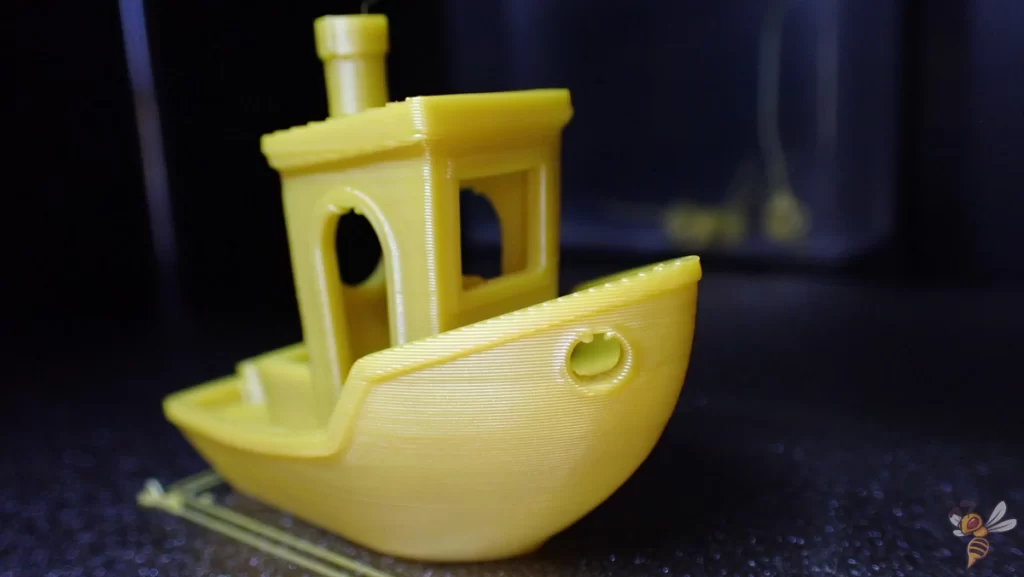
The first test print was the well-known 3DBenchy, which was available pre-sliced on the printer’s USB stick. The result was very good, with clean lines and few visible errors.
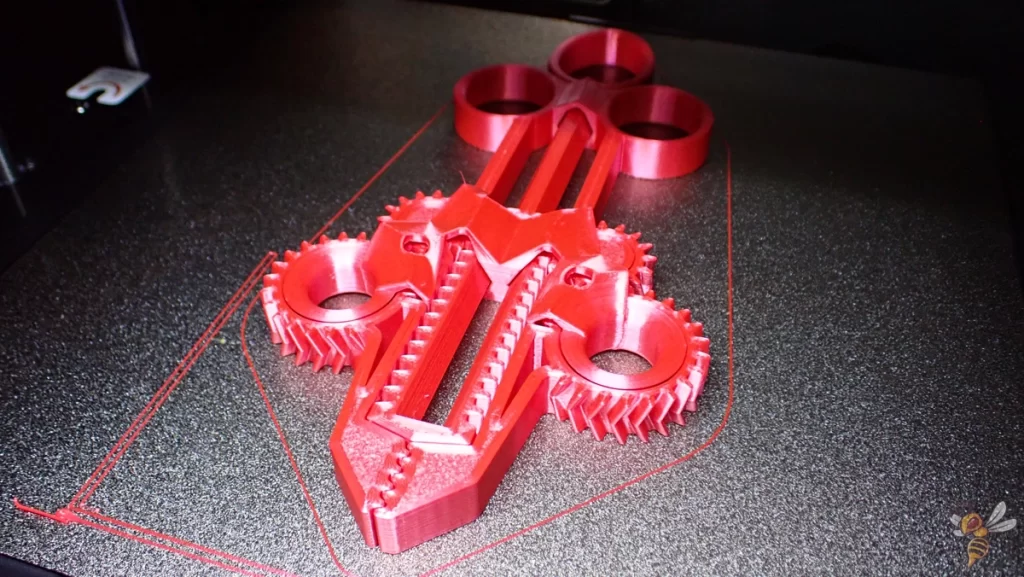
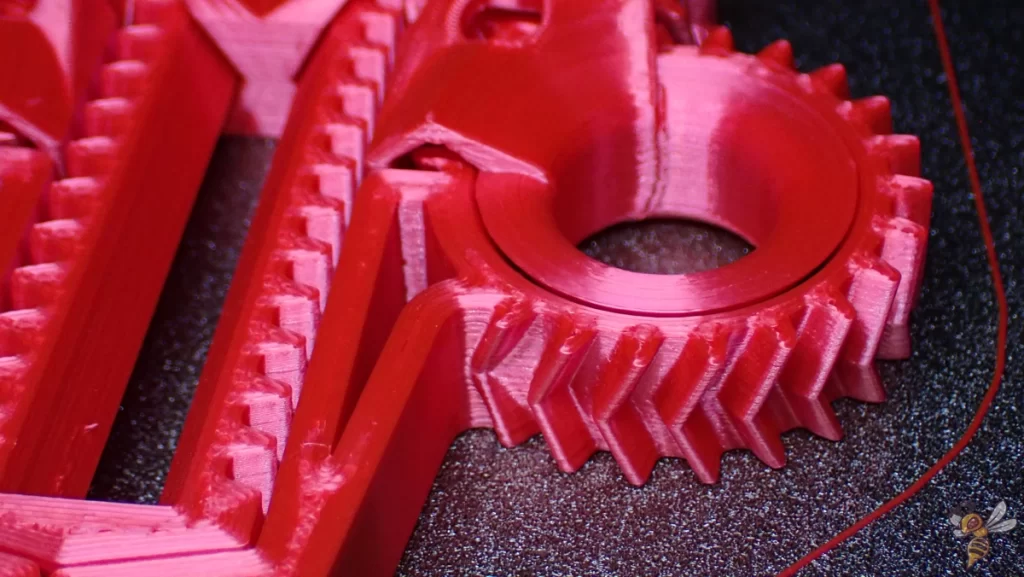
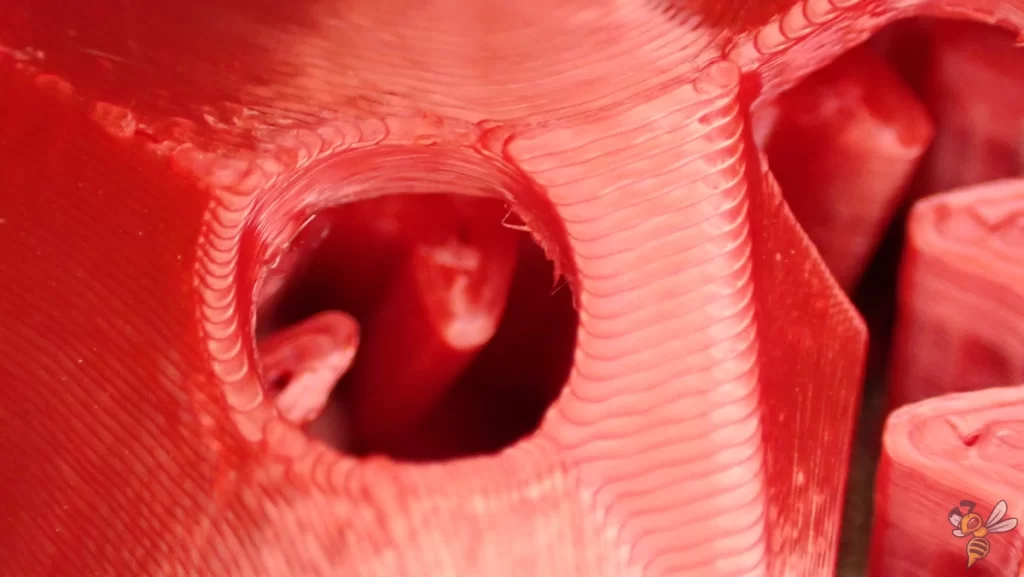
Next, I printed the Predator Action Pliers – a complex mechanical object. Any printing errors or dimensional deviations would affect the functionality, but the result was almost perfect and the pliers worked perfectly.
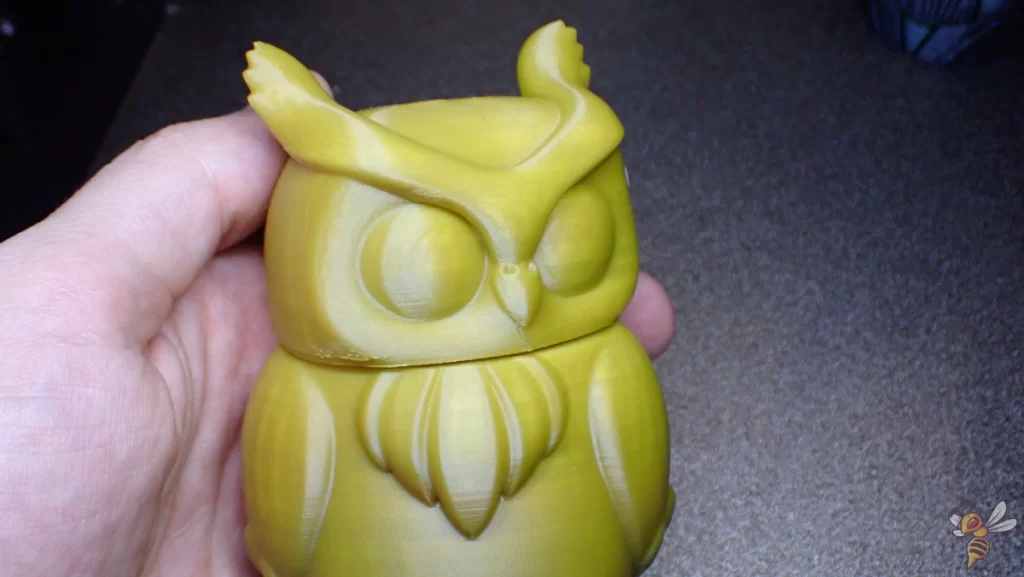
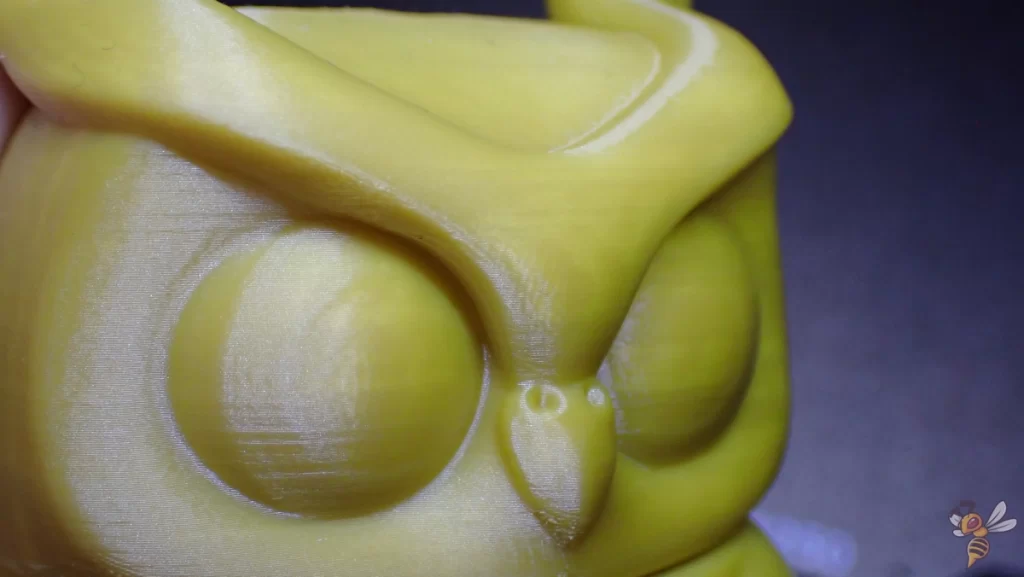
This was followed by an owl jar, which I printed to provoke stringing. Despite both parts being printed at the same time, no stringing occurred, which indicates not only my precise calibration but also the accurate extrusion of the extruder.
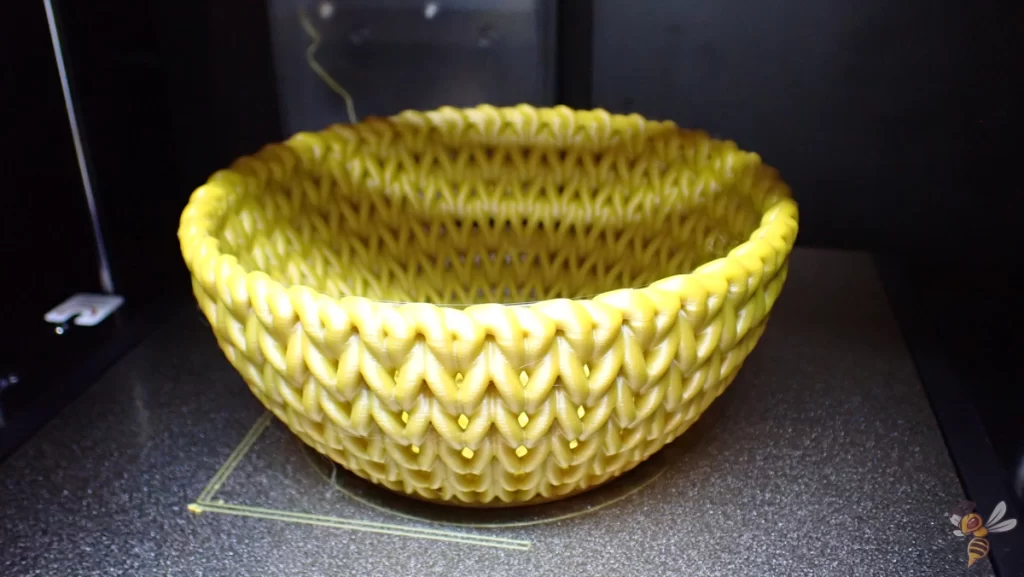
Another test was a bowl with a design based on knitted patterns (link). This complex object with many holes and changes of direction could easily have led to errors, but here too the result was perfect!
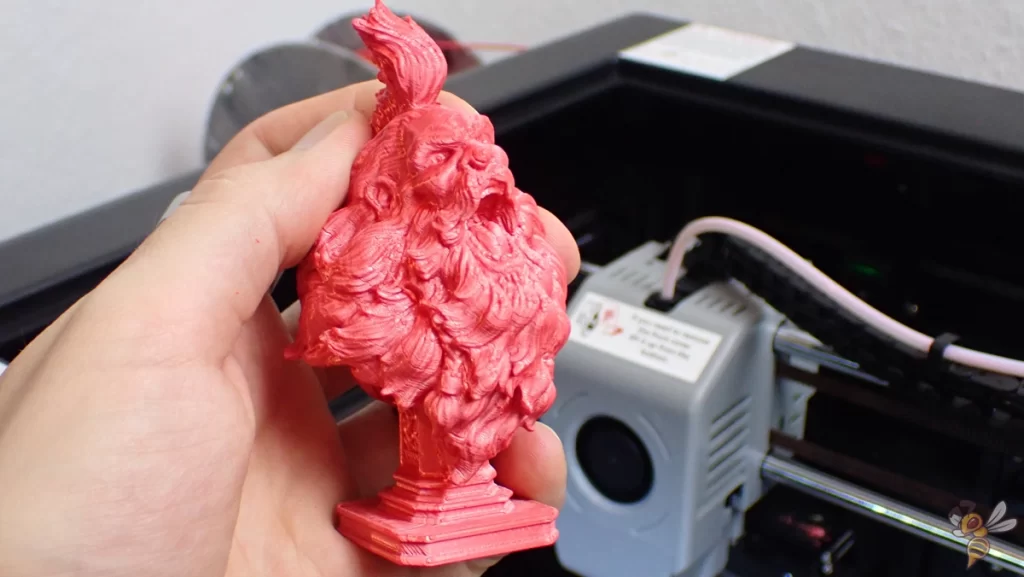
The next test was a scaled-down dwarf bust. I had actually expected to discover a number of printing errors here, as the model already has a lot of detail anyway, and the small scale made it even more detailed. Nevertheless, the quality is more than satisfactory!
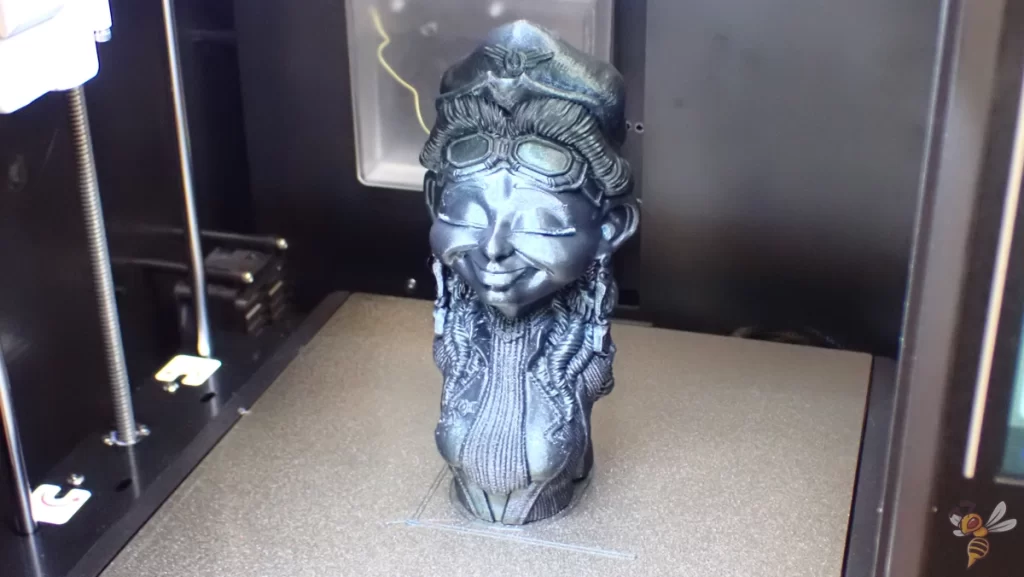
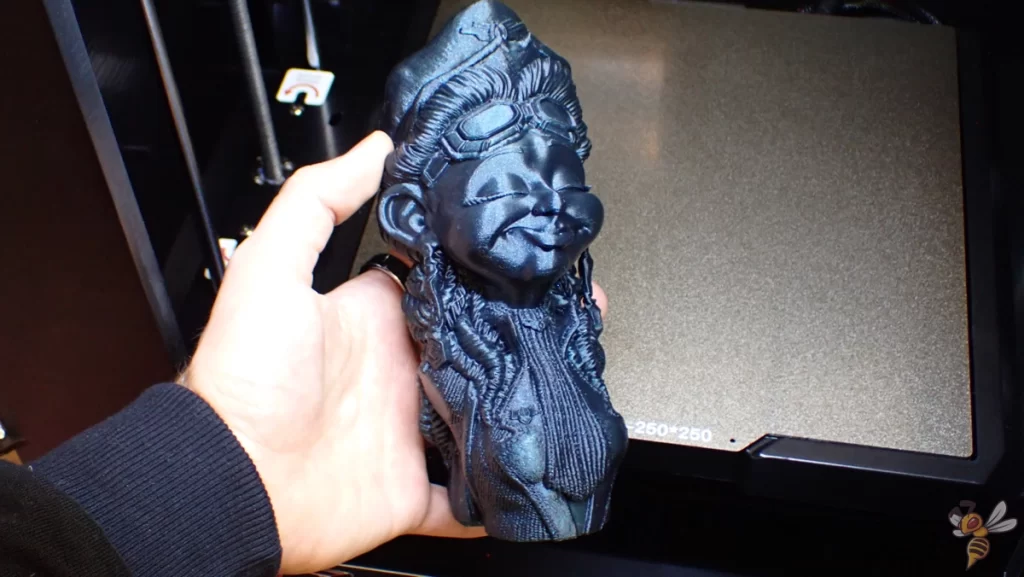
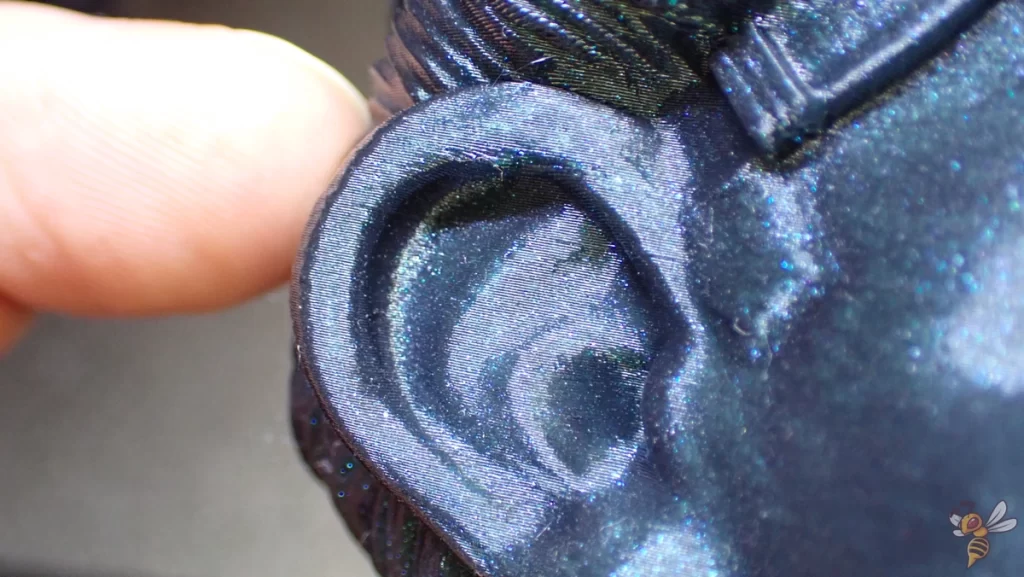

Finally, I printed a pilot bust with lots of detail to put the print quality to the ultimate test. The bust was printed flawlessly, with all the fine details retained and almost no printing errors.
Overall, these test prints confirm the exceptional print quality of the Qidi Tech Q1 Pro. Even with challenging objects and high speeds, the printer delivers precise and error-free results.
FAQ – Frequently Asked Questions
Yes, the Qidi Tech Q1 Pro is ideal for beginners. Thanks to its automatic print bed leveling and nozzle cleaning, efficient self-calibration and easy filament change, getting started with 3D printing has never been easier. These features reduce setup time and minimize common beginner mistakes, so even newcomers can quickly achieve high-quality prints.
Absolutely. The Q1 Pro is excellent for a wide range of filaments due to its closed and heatable print volume, the direct drive extruder and the ability to reach print temperatures of up to 350 °C. These features make it possible to achieve excellent results with standard materials such as PLA as well as with more demanding filaments such as ABS, TPU or even specialized materials such as ASA, carbon or fiberglass filaments.
The Q1 Pro impresses with a maximum print speed of up to 500 mm/s, whereby the recommended standard speed is 300 mm/s. Despite these high speeds, the print quality remains consistently high thanks to resonance compensation and the stable chassis.
Conclusion – Is the Qidi Tech Q1 Pro Worth It?
After extensive testing and numerous prints, one thing is clear: the Qidi Tech Q1 Pro* is a 3D printer that will delight both beginners and advanced users. Its ease of use and outstanding print quality make it a reliable partner for your first steps in 3D printing or for expanding your range of projects.
- Beginner-friendly: With functions such as automatic nozzle cleaning and self-calibration, you can get started straight away without having to delve into complicated preparations.
- For advanced users: The high printing speed and compatibility with a wide range of filaments open up new possibilities for demanding projects.
- Quality meets speed: The Q1 Pro proves that high printing speed does not have to come at the expense of quality. From fine details to robust parts, it delivers consistently impressive results.
Whether you’re just getting started with 3D printing or are an experienced printer, the Q1 Pro is worth considering. It combines ease of use with the flexibility and quality you need for your creative or technical projects.
The Qidi Tech Q1 Pro is a highly versatile and user-friendly 3D printer, excelling in speed, quality, and filament compatibility. Its robust design and advanced features like automatic bed leveling and nozzle cleaning system make it a top choice for both beginners and experienced users.
Do you have any questions, comments or experiences with the Q1 Pro? Let us know in the comments! Your feedback is important to us and we look forward to exchanging ideas with you and learning together.
Disclosure: This website is the property of Martin Lütkemeyer and is operated by Martin Lütkemeyer. Martin Lütkemeyer is a member of the Amazon Services LLC and other Affiliate Programs. These are affiliate advertising programs designed to enable websites to earn advertising revenue through advertising and linking to Amazon.com and others. Links marked with * are affiliate links.

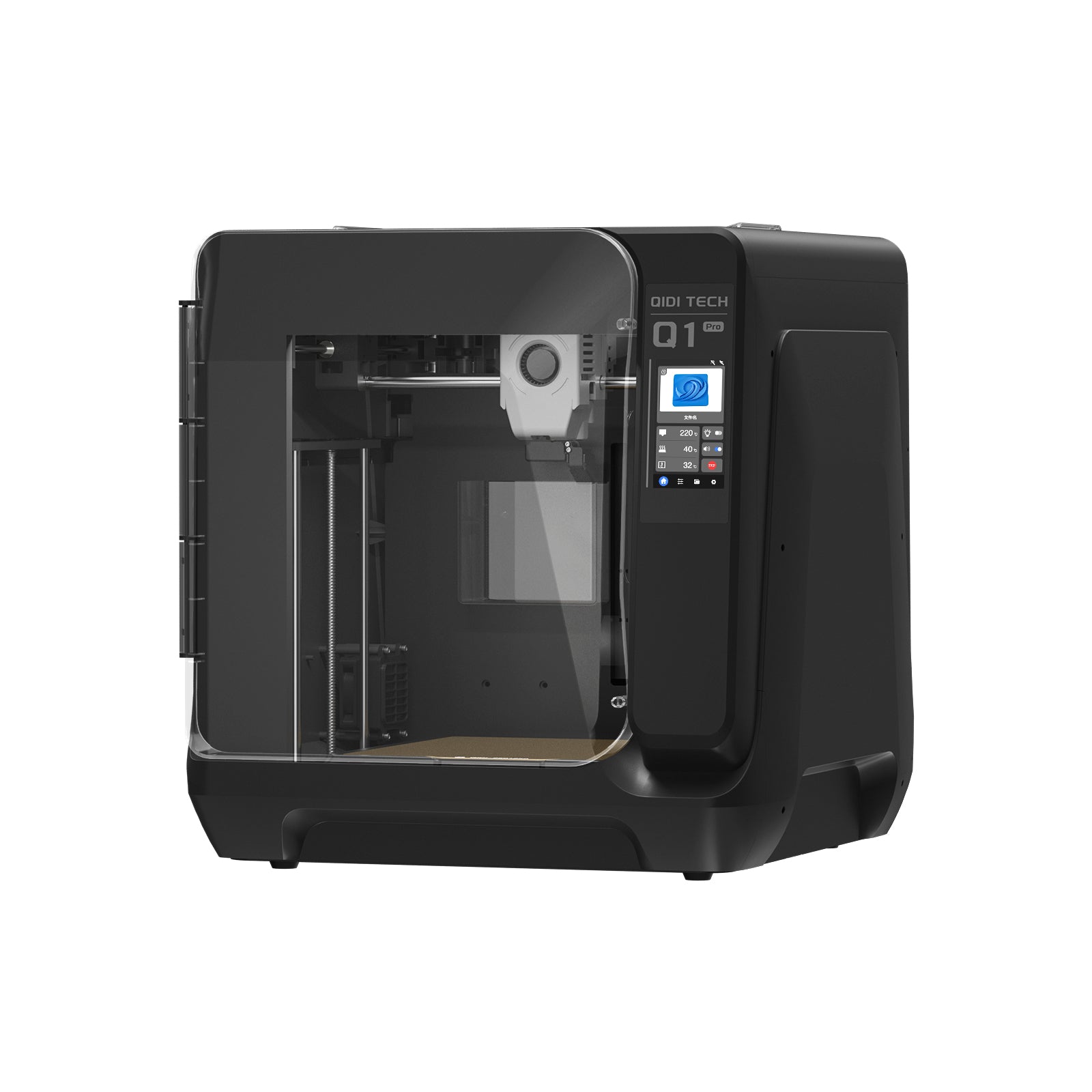

Great, that’s a real nice revue!